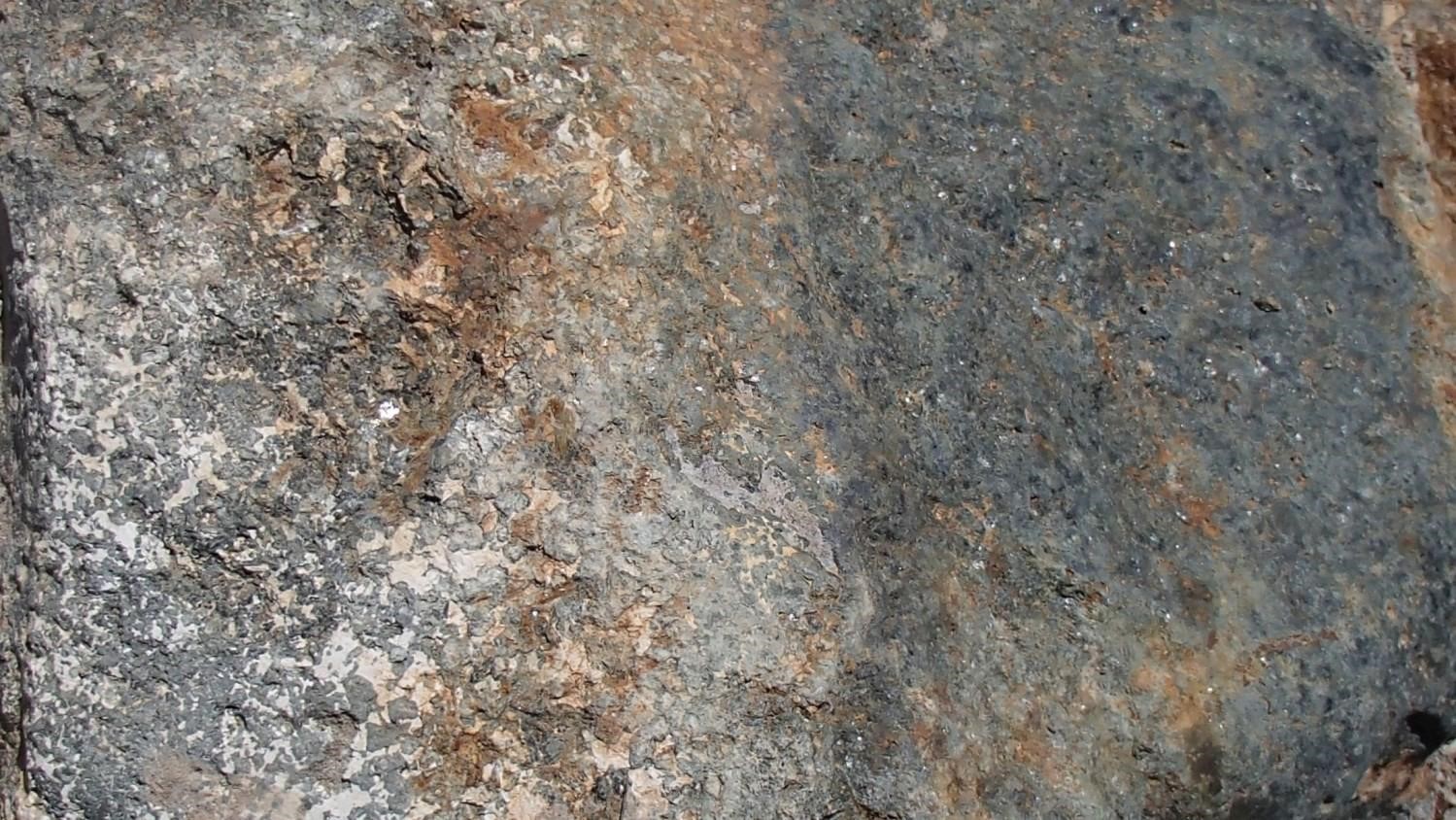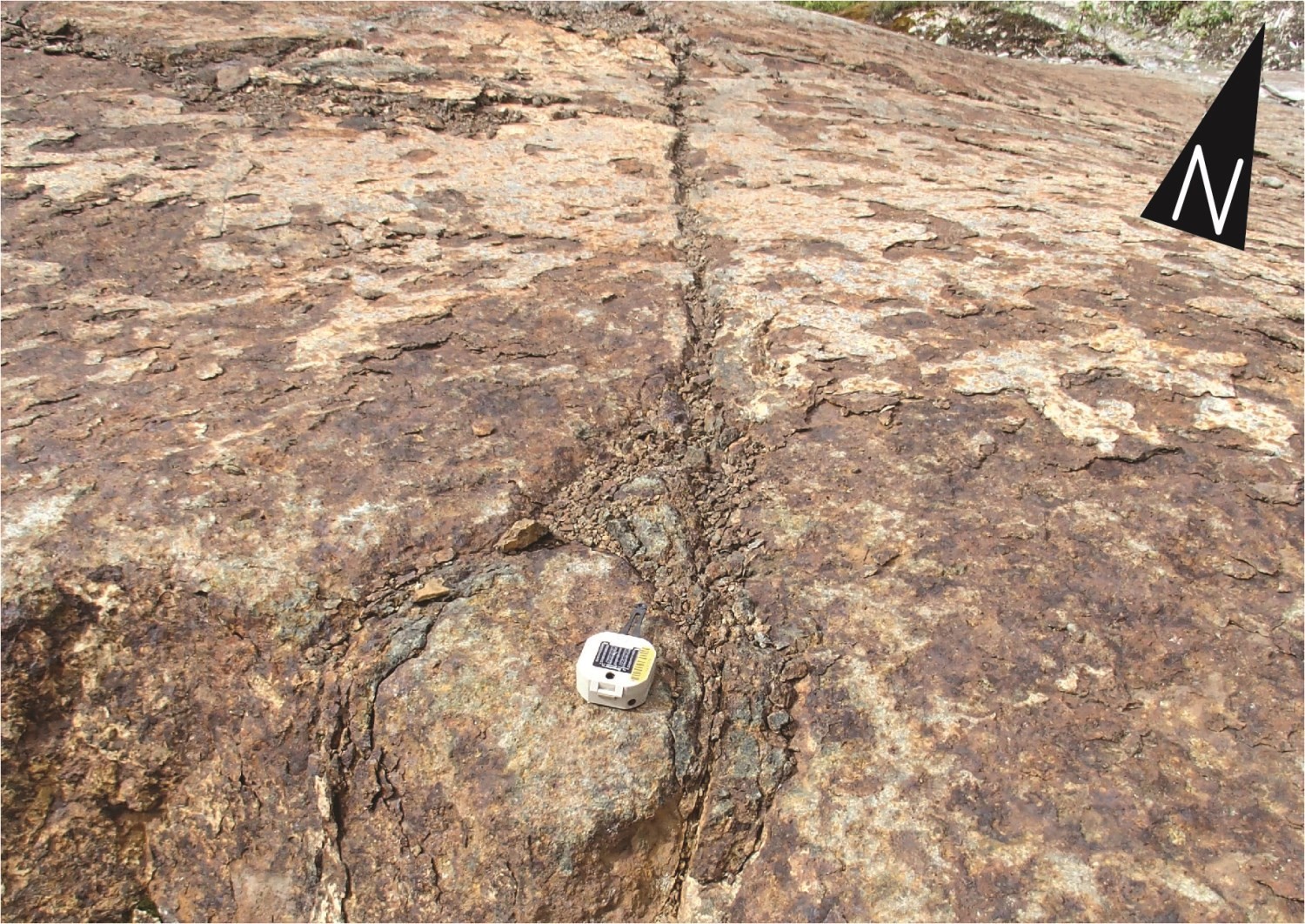
DISCLAIMER: This English version is translated from the original French. In case of any discrepancy, the French version shall prevail.
| Author: | Bandyayera and Sharma, 2001 |
| Age: | Neoarchean |
| Stratotype: | None |
| Type area: | The Rocher Intrusion (nAlrc) cuts paragneisses of the Rocher |
| Geological province: | Superior Province |
| Geological subdivision: | Opatica Subprovince |
| Lithology: | Ultramafic to mafic intrusive rocks |
| Category: | Lithodemic |
| Rank: | Lithodeme |
| Status: | Formal |
| Use: | Active |
Background
The Rocher Intrusion first designated an informal ultramafic to mafic intrusive unit described by Bandyayera and Sharma (2001), following the discovery of the Rocher Lake Ni-Cu mineralization by Nuinsco Resources in 1997. Leclerc and Caron-Côté (2017) formalized this lithodeme and included it into the Rocher-Quénonisca Intrusive Suite, which also includes the Whitefish Intrusion dominated by purple gabbro and monzonite.
Description
The Rocher Intrusion is an ovoid-shaped body about 1 km long (E-W axis) for 600 m wide. It is divided into four units: purple gabbro (nAlrc1), pyroxenite (nAlrc2), peridotite (nAlrc3) and plagioclase peridotite (nAlrc3a).
Descriptions come mainly from megascopic and microscopic observations made on Nuinsco Resources drill cores. These drills were designed to evaluate the Rocher Lake Ni-Cu±PGE deposit. Mafic and ultramafic intrusive rocks are little or not deformed and primary structures are preserved. Pseudomorphized primary minerals are usually identifiable. All ferromagnesian minerals are hydrated and replaced by amphibole (tremolite-actinolite), chlorite and epidote. Olivine is mainly replaced by serpentine, talc and magnetite. Plagioclase is partially altered to sericite ± epidote.
Rocher Intrusion 1 (nAlrc1): Purple Gabbro
The gabbroic unit occupies the peripheral zone of the intrusion. It is medium to coarse-grained and mesocratic with a subophitic structure. Gabbro is composed of clinopyroxene replaced by tremolite-actinolite, highly sericitized and epidotized purple-colored plagioclase and 2-3% titanite. Amphibole appears in aggregates of pale green crystals, usually elongated, rarely tabular. This mineral is partially or completely replaced by the assemblage chlorite ± epidote ± sericite ± muscovite. Gabbro also includes nearly 4% interstitial primary biotite. The unit is generally not mineralized except for the bottom part, where some disseminated sulphides (up to 10% of sulphides) are observed.
Rocher Intrusion 2 (nAlrc2): Pyroxenite

 Pyroxenite (websterite) of the nAlrc2 unit occupies the central and western parts of the intrusion. The greenish black rock is medium to coarse-grained and equigranular. Pyroxenes constitute the cumulus phases and plagioclase the intercumulus phase. The metamorphic assemblage observed in thin sections is composed of tremolite-actinolite, chlorite, epidote, sericite and carbonate. In places, primary minerals are preserved: clinopyroxene, orthopyroxene, plagioclase ± olivine ± titanite ± apatite ± zircon ± quartz. Pyroxenite is interstratified with thin layers of gabbro and norite; the whole is intruded by late granitic dykes. This unit hosts Ni-Cu ± PGE mineralization. Surface exposures show disseminated sulphide aggregates composed of pyrite, chalcopyrite, pyrrhotite and pentlandite.
Pyroxenite (websterite) of the nAlrc2 unit occupies the central and western parts of the intrusion. The greenish black rock is medium to coarse-grained and equigranular. Pyroxenes constitute the cumulus phases and plagioclase the intercumulus phase. The metamorphic assemblage observed in thin sections is composed of tremolite-actinolite, chlorite, epidote, sericite and carbonate. In places, primary minerals are preserved: clinopyroxene, orthopyroxene, plagioclase ± olivine ± titanite ± apatite ± zircon ± quartz. Pyroxenite is interstratified with thin layers of gabbro and norite; the whole is intruded by late granitic dykes. This unit hosts Ni-Cu ± PGE mineralization. Surface exposures show disseminated sulphide aggregates composed of pyrite, chalcopyrite, pyrrhotite and pentlandite.
Rocher Intrusion 3 (nAlrc3): Peridotite
Peridotite (nAlrc3) occupies the eastern part of the intrusion. It is a lherzolite composed of olivine, orthopyroxene, clinopyroxene, plagioclase, traces of biotite, phlogopite and interstitial sulphides. Secondary minerals include amphibole, chlorite, serpentine and magnetite. Olivine is a cumulus phase and sometimes includes brown spinel grains. Orthopyroxene, clinopyroxene, plagioclase and phlogopite fill interstitial spaces (intercumulus phases).
Plagioclase peridotite (lherzolite) (nAlrc3a) occurs locally in the edge region south-east and north of the intrusion. It is composed of olivine, orthopyroxene, clinopyroxene, biotite, plagioclase, magnetite, chromite and traces of sulphides. Serpentinized olivine contains small grains of chromite and intercumulus plagioclase.
Thickness and distribution
Nuinsco Resources’ drilling data indicates that the Rocher Intrusion forms an E-W ovoid body of about 1 km long and 600 m wide. Its dip is 50° for a maximum depth of 500 m.
Dating
Analysis of a massive granophyric bird’s eye gabbro sample coming from drillhole NLR-99-05 (Jones and Pitman, 1999) gave a crystallization age (TIMS, U-Pb on zircons) of 2703 +7/-4 Ma (Bandyayera and Sharma, 2001). Bandyayera and Sharma (2001) interpret this intrusion as late-tectonic.
| Unit | Sample | Isotopic System | Mineral | Cristallization Age (Ma) | (+) | (-) | Reference(s) |
| nAlrc1 | SGNO-99-06 | U-Pb | Zircon | 2703 | 7 | 4 | Bandyayera and Sharma, 2001 |
Stratigraphic Relationship(s)
The Rocher Intrusion cuts paragneiss of the Rocher Complex and dioritic-to-tonalitic gneiss of the Chensagi Suite at the western edge of the Nipukatasi Massif (east of Rocher Lake, NTS sheet 32K09). It is cut by late granite dykes whose composition is similar to that of the Nipukatasi Massif.
Paleontology
Does not apply.
References
Publications available through SIGÉOM Examine
BANDYAYERA, D., SHARMA, K N M., 2001. MINERALISATIONS EN NI-CU±EGP DANS LA BANDE VOLCANO-SEDIMENTAIRE DE FROTET-EVANS (SNRC 32K). MRN; MB 2001-06, 72 pages.
JONES, P., PITMAN, P., 1999. PROGRAMME DE SONDAGE 1999, PROPRIETE LAC ROCHER. NUINSCO RESOURCES LTD, rapport statutaire soumis au gouvernement du Québec; GM 57653, 549 pages.
LECLERC, F., CARON-COTE, E., 2017. Levé géologique dans la sous-province d’Opatica au nord-est de Matagami (région du lac Amisquioumisca). MERN; BG 2017-01, 2 plans.
Suggested Citation
Ministère de l’Énergie et des Ressources naturelles (MERN). Rocher Intrusion. Quebec Stratigraphic Lexicon. https://gq.mines.gouv.qc.ca/lexique-stratigraphique/province-du-superieur/intrusion-de-rocher_en [accessed on Day Month Year].
Contributors
First publication | François Leclerc, P. Geo., Ph.D. françois.leclerc@mern.gouv.qc.ca; Emmanuel Caron-Côté, GIT, M.Sc. emmanuel.caron-cote@mern.gouv.qc.ca (redaction) Marie-Andrée Vézina, P. Geo. (coordination); Claude Dion, Eng., M.Sc. (critical review and editing); Céline Dupuis, P. Geo., Ph.D. (English version); Jean-Marie Nzengue (HTML editing). |

